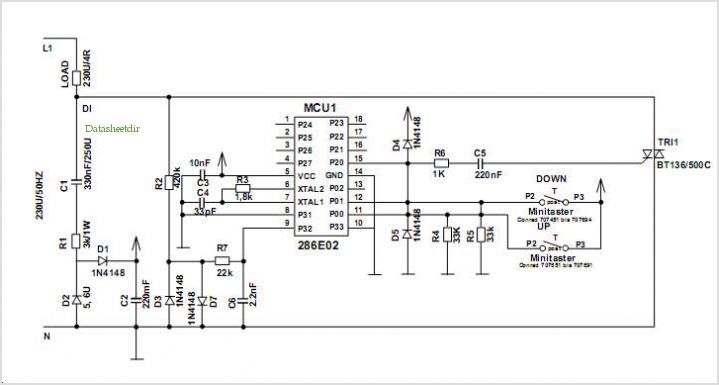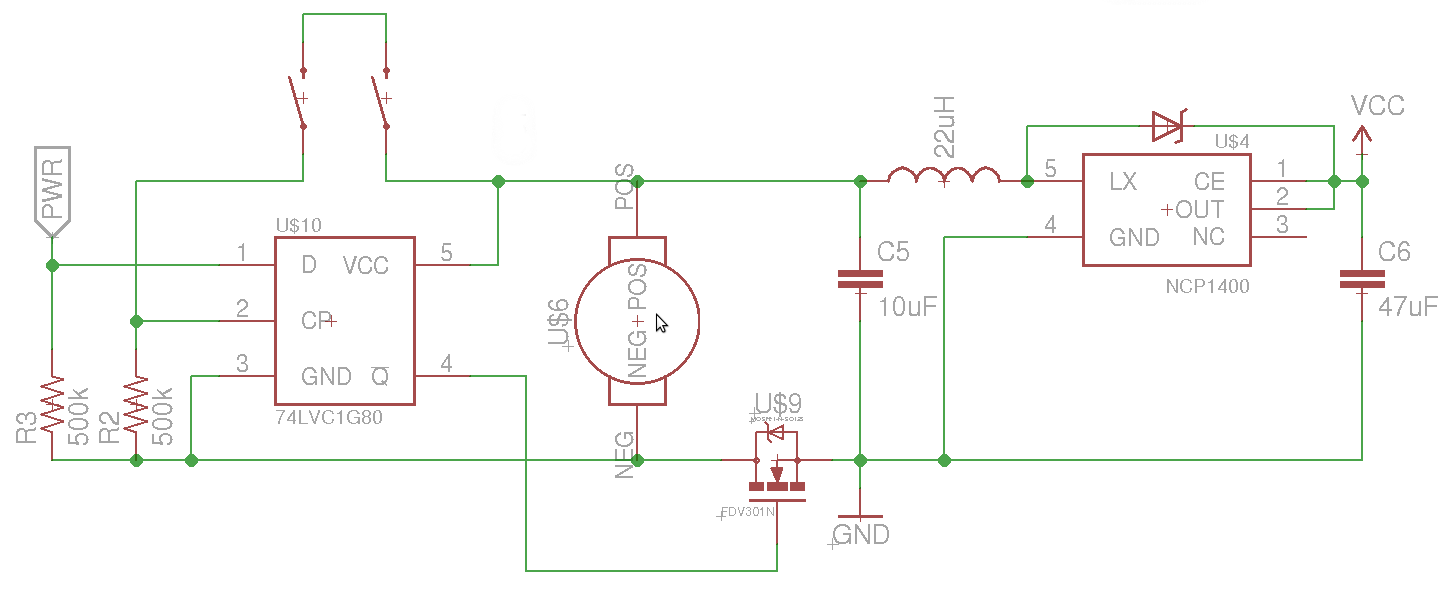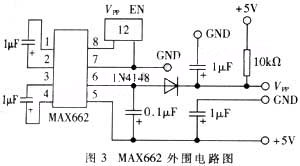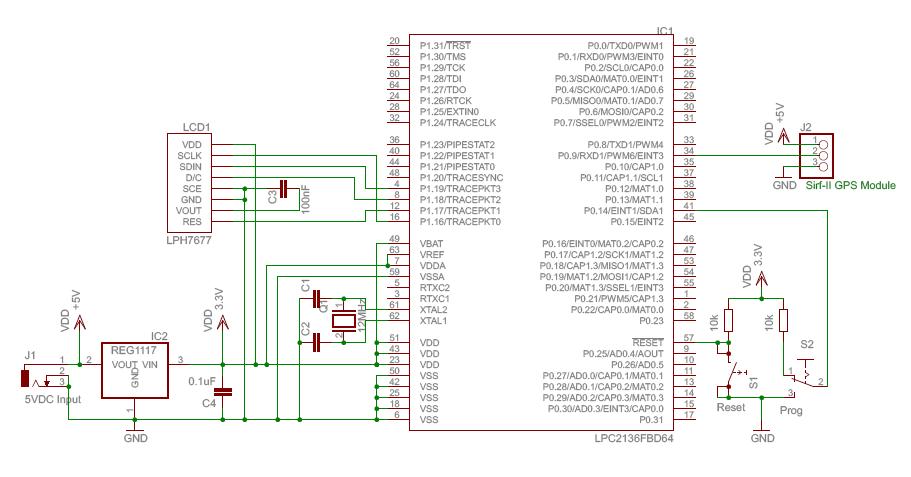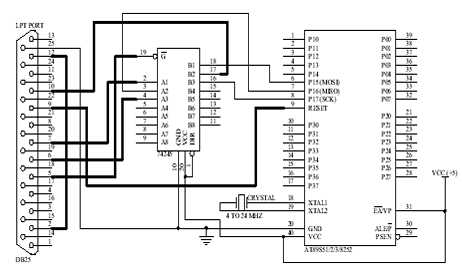
Microcontroller Clocking a Transmitter?
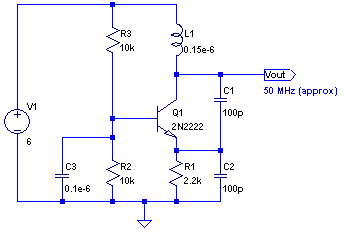
The core of any transmitter is typically an oscillator circuit, and in simple transmitters, such as QRSS devices, a crystal is often used. Frequency adjustment is achieved by modifying the capacitance to ground on one of the crystal's legs. Simple oscillators, like the Colpitts design utilizing an NPN transistor, are frequently employed. However, in the pursuit of designing a minimal-case long-distance transmitter, consideration is being given to the oscillator circuitry within a microcontroller, which can be clocked by an external crystal. For example, the pinout diagram from an Atmel ATTiny2313 AVR shows that pins 4 and 5 accommodate a crystal, while pin 6 features a CKOUT function. The specifics of the output waveform remain unclear, as the datasheet lacks clarity. Available information suggests it is capable of clocking another microcontroller, raising the possibility of generating RF at the same frequency as the clock. Furthermore, there is speculation about programming the microcontroller to adjust its clock speed or frequency output by varying capacitance on one of the crystal's legs. This could potentially be achieved using a reverse-biased LED with variable voltage controlled by an output pin of the microcontroller. This concept envisions a single-chip transmitter and frequency-shifting keyer, requiring only the insertion of a crystal to function. Initial tests indicate that it produces sufficient RF to be easily received within the same room, although the power output and waveform characteristics remain uncertain. It is suspected that the output may be a weak sine wave needing a preamplifier or possibly amplified square waves requiring low-pass filtering.
The described transmitter design revolves around the utilization of a microcontroller, specifically the Atmel ATTiny2313 AVR, which integrates oscillator functionality that can be adapted for RF transmission. The oscillator circuit, a fundamental component of the transmitter, is tasked with generating a stable frequency signal, typically achieved through a crystal oscillator configuration. The ability to modify the capacitance connected to the crystal allows for fine-tuning of the output frequency, which is critical for accurate RF transmission.
In this design, the pins designated for the crystal (pins 4 and 5) facilitate the connection of an external crystal oscillator, while pin 6's CKOUT feature offers the potential to output a clock signal. The nature of this signal—whether it is a sine wave or a square wave—has significant implications for the performance of the transmitter. A sine wave output would be ideal for RF applications, as it is less prone to distortion and more efficient for transmission. Conversely, a square wave would require additional filtering to smooth the signal before transmission.
The proposal to implement a variable capacitance mechanism through a reverse-biased LED introduces an innovative approach to dynamically adjust the oscillator frequency. This method would allow for real-time frequency modulation, which could enhance the versatility of the transmitter in various applications. The integration of such a feature within a single microcontroller chip simplifies the overall circuit design, reducing the number of components required and potentially lowering costs.
Testing of the prototype has indicated that the transmitter is capable of generating RF signals strong enough to be detected by a nearby receiver. However, further investigation is needed to ascertain the precise characteristics of the output waveform and the overall power output. This information is crucial for determining the efficacy of the design and its suitability for long-distance transmission applications. Additional measures, such as incorporating a preamplifier or low-pass filter, may be necessary to optimize the signal quality and ensure reliable transmission over extended ranges.The core of any transmitter is usually an oscillator circuit, and in simple transmitters (i. e. , QRSS devices), it`s often a crystal. Frequency adjustment is accomplished by adjusting capacitance to ground on one of the crystal legs. Simple oscillators such as the Colpitts design (based on an NPN transistor) are often used. (pictured) However in my quest to design a minimal-case long-distance transmitter, I`m trying to think outside the box. Although it`s relatively simple, that`s still several parts just to make an oscillating sine wave from a crystal. The result still has to be preamplified before sending the signal to an antenna. I`m starting to wonder about the oscillator circuitry inside a microcontroller which has the ability to be clocked by an external crystal.
For example, take the pinout diagram from an Atmel ATTiny2313 AVR: : See how pins 4 and 5 allow for a crystal, and pin 6 has a CKOUT feature I`m still not sure exactly what the waveform of its output looks like. The datasheet is almost intentionally cryptic. About the only thing I`ve been able to discover from the Internet is that it`s sufficient to clock another microcontroller.
However, if it`s an amplified sine wave output, how cool is it that it might be able to produce RF at the same frequency at which it`s clocked Taking it a step further, I wonder if I could write code for the microcontroller to allow it to adjust its own clock speed / frequency output by adjusting capacitance on one of the legs of the crystal. A reverse-biased LED with variable voltage pressed against it from an output pin of the microcontroller might accomplish this.
How cool would this be a single chip transmitter and frequency-shifting keyer all in one Just drop in a crystal of your choice and BAM, ready to go. Believe it or not I`ve tested this mildly and it`s producing enough RF to be able to be picked up easily by a receiver in the same room, but I`m still unsure of the power output or the waveform.
If the waveform is an amplified sine wave I`m going to pass out. More likely it`s a weak sine wave needing a preamplifier still, or perhaps even amplified square waves in need of lowpass filtering 🔗 External reference
The described transmitter design revolves around the utilization of a microcontroller, specifically the Atmel ATTiny2313 AVR, which integrates oscillator functionality that can be adapted for RF transmission. The oscillator circuit, a fundamental component of the transmitter, is tasked with generating a stable frequency signal, typically achieved through a crystal oscillator configuration. The ability to modify the capacitance connected to the crystal allows for fine-tuning of the output frequency, which is critical for accurate RF transmission.
In this design, the pins designated for the crystal (pins 4 and 5) facilitate the connection of an external crystal oscillator, while pin 6's CKOUT feature offers the potential to output a clock signal. The nature of this signal—whether it is a sine wave or a square wave—has significant implications for the performance of the transmitter. A sine wave output would be ideal for RF applications, as it is less prone to distortion and more efficient for transmission. Conversely, a square wave would require additional filtering to smooth the signal before transmission.
The proposal to implement a variable capacitance mechanism through a reverse-biased LED introduces an innovative approach to dynamically adjust the oscillator frequency. This method would allow for real-time frequency modulation, which could enhance the versatility of the transmitter in various applications. The integration of such a feature within a single microcontroller chip simplifies the overall circuit design, reducing the number of components required and potentially lowering costs.
Testing of the prototype has indicated that the transmitter is capable of generating RF signals strong enough to be detected by a nearby receiver. However, further investigation is needed to ascertain the precise characteristics of the output waveform and the overall power output. This information is crucial for determining the efficacy of the design and its suitability for long-distance transmission applications. Additional measures, such as incorporating a preamplifier or low-pass filter, may be necessary to optimize the signal quality and ensure reliable transmission over extended ranges.The core of any transmitter is usually an oscillator circuit, and in simple transmitters (i. e. , QRSS devices), it`s often a crystal. Frequency adjustment is accomplished by adjusting capacitance to ground on one of the crystal legs. Simple oscillators such as the Colpitts design (based on an NPN transistor) are often used. (pictured) However in my quest to design a minimal-case long-distance transmitter, I`m trying to think outside the box. Although it`s relatively simple, that`s still several parts just to make an oscillating sine wave from a crystal. The result still has to be preamplified before sending the signal to an antenna. I`m starting to wonder about the oscillator circuitry inside a microcontroller which has the ability to be clocked by an external crystal.
For example, take the pinout diagram from an Atmel ATTiny2313 AVR: : See how pins 4 and 5 allow for a crystal, and pin 6 has a CKOUT feature I`m still not sure exactly what the waveform of its output looks like. The datasheet is almost intentionally cryptic. About the only thing I`ve been able to discover from the Internet is that it`s sufficient to clock another microcontroller.
However, if it`s an amplified sine wave output, how cool is it that it might be able to produce RF at the same frequency at which it`s clocked Taking it a step further, I wonder if I could write code for the microcontroller to allow it to adjust its own clock speed / frequency output by adjusting capacitance on one of the legs of the crystal. A reverse-biased LED with variable voltage pressed against it from an output pin of the microcontroller might accomplish this.
How cool would this be a single chip transmitter and frequency-shifting keyer all in one Just drop in a crystal of your choice and BAM, ready to go. Believe it or not I`ve tested this mildly and it`s producing enough RF to be able to be picked up easily by a receiver in the same room, but I`m still unsure of the power output or the waveform.
If the waveform is an amplified sine wave I`m going to pass out. More likely it`s a weak sine wave needing a preamplifier still, or perhaps even amplified square waves in need of lowpass filtering 🔗 External reference
